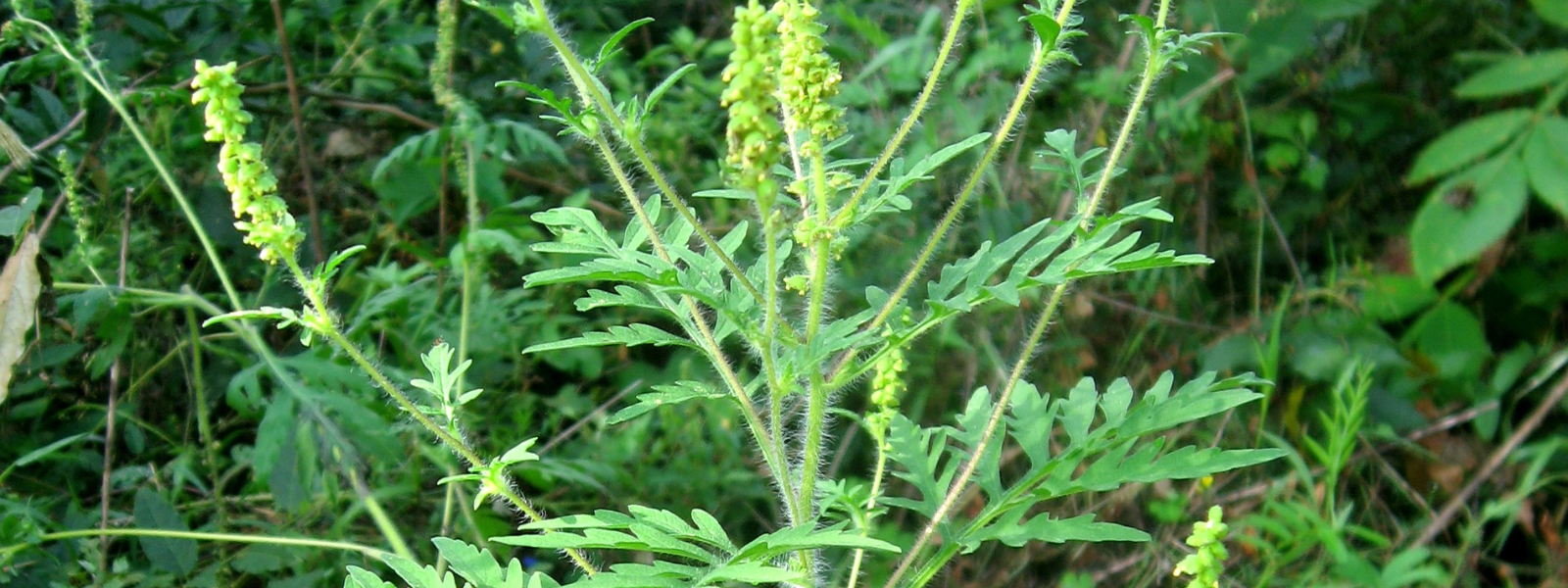
Common Name
Annual Ragweed, Ragweed, ambrosia, horseweed or asthma plant
Scientific Name
Ambrosia artemisiifolia
Family
Asteraceae
Lifecycle
Annual
Seasons of Growth
Spring to Autumn
Key Distinguishing Feature
Fern-like leaves and inconspicuous greenish flowers
Annual Ragweed (Ambrosia artemisiifolia) is a common and problematic weed known for causing allergic reactions in many people due to its pollen.
-
Growth Habit: Annual Ragweed is an annual herbaceous plant that can grow from 1 to 3 feet in height.
-
Leaves: The leaves are finely divided and resemble fern leaves. They are alternate and deeply lobed with serrated margins.
-
Flowers: The small, greenish flowers of Annual Ragweed are inconspicuous and grow in spikes at the top of the stem. The plant produces separate male and female flowers on the same plant.
-
Pollen Production: Annual Ragweed is notorious for its abundant pollen production, which is a common cause of hay fever and allergic reactions in humans.
-
Habitat: It thrives in disturbed areas, roadsides, fields, and vacant lots. It can quickly colonize areas with open soil.
Ecological Impact:
-
While Annual Ragweed is not typically considered invasive in the same way some other weeds are, it can outcompete native vegetation in disturbed areas.
-
Its pollen is a major allergen and can cause severe allergic reactions in people with hay fever or pollen allergies.
Control Methods:
-
Control of Annual Ragweed often involves both preventive measures and management strategies. It is important to minimize disturbances in natural areas to prevent its establishment.
-
Mechanical control methods, such as mowing and pulling, can be effective for small infestations.
-
Herbicides may be used for larger infestations, but care must be taken to use them safely and effectively.
-
Reducing pollen exposure for individuals with allergies can be achieved through various means, such as wearing masks and using air purifiers.
Annual Ragweed is a plant of concern primarily due to its impact on human health through pollen allergies. Managing its presence in areas where people are affected by these allergies is an important aspect of its control.
Key Products for Control:
-
Indigo MetForce - Metsulfuron-methyl




